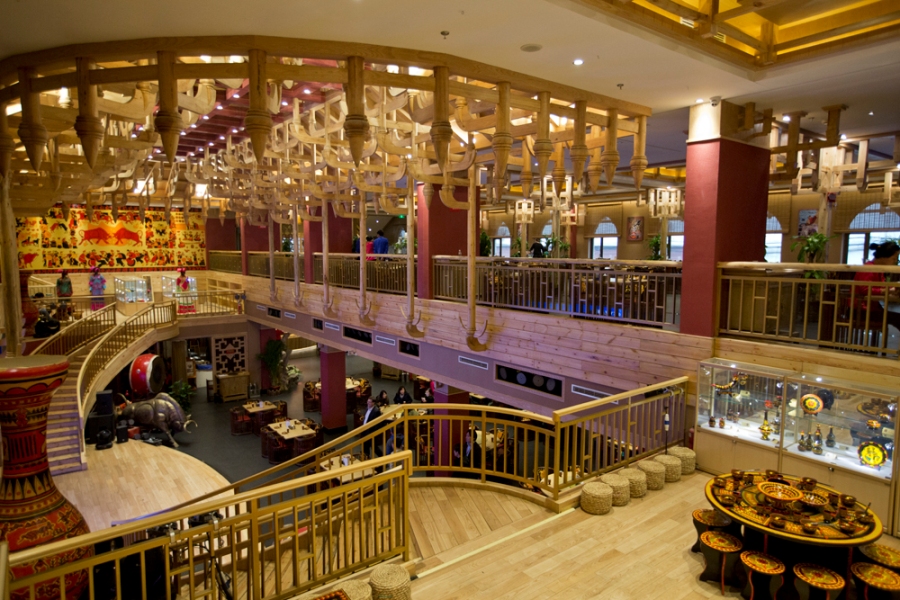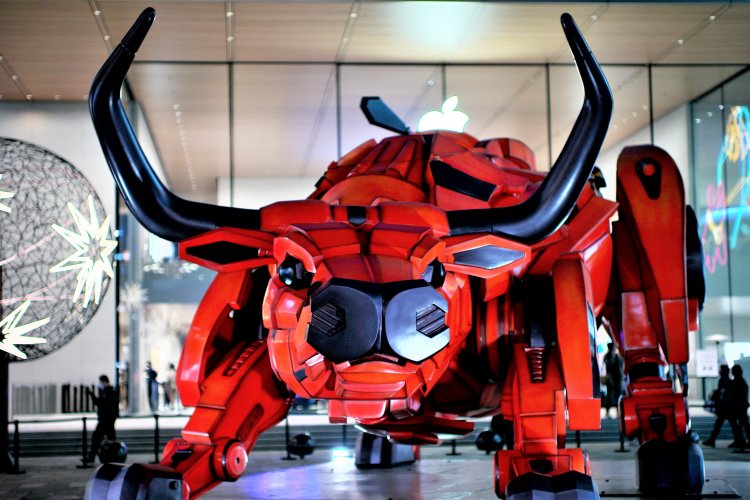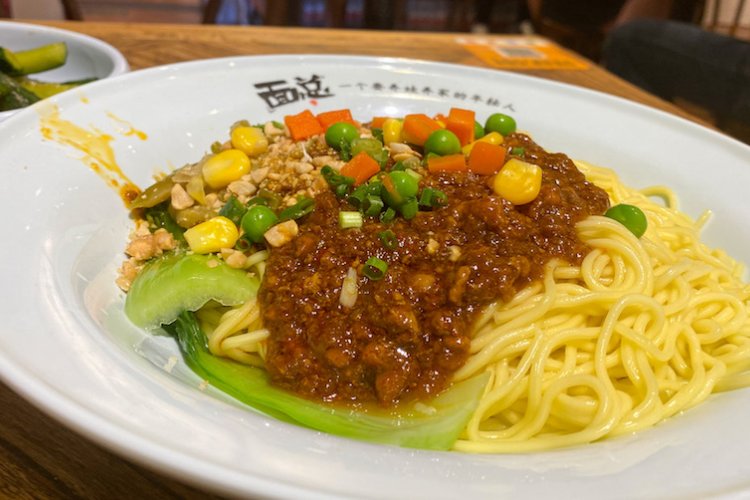Real Foodie Culture: Dine at Asiniuniu and Get a Unique Glimpse into Sichuan’s Yi Minority
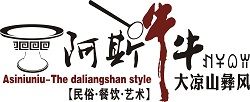
This post is sponsored by Asiniuniu, Beijing's most unique Sichuan restaurant serving the distinctive cuisine of Sichuan’s Yi Minority.
Diners watch as dancers twirl on stage, their colorful, flowing robes spinning in a blurry warm hue reminiscent of a distant paradise’s sunset. But even more dazzling is what’s on their plates: glistening, juicy morsels of yijia tuotuo zhurou (彝家坨坨猪肉) pork; peppery chunks of wujin zhugan bian hongshaorou (乌金猪干煸红烧肉); piping-hot portions of yejun tujibao (野菌土鸡煲) chicken mushroom pot soup; and steaming bowls of fish-laced, sunshine-yellow huili chuanfu yu (会理船夫鱼) porridge.
These vibrantly exotic dishes are the signature menu items at Asiniuniu, a massive three-story Sichuan restaurant located in the southernmost corridor of Gongti Beilu’s Courtyard #4 – Ground Zero for good eats in Beijing with an impressive array of establishments including Duck de Chine, Jing A Taproom, Q-Mex, The Rug, and Home Plate Bar-B-Que.
Sichuan restaurants are a dime-a-dozen in Beijing, but Asiniuniu sets itself apart by serving the distinctive cuisine of the Yi people, an ethnic minority group that lives in Sichuan’s mountainous Liangshan Prefecture. Named after a traditional Yi folk song, this restaurant not only serves delicious food, but is also as an ornate showcase of traditional Yi architecture and décor.
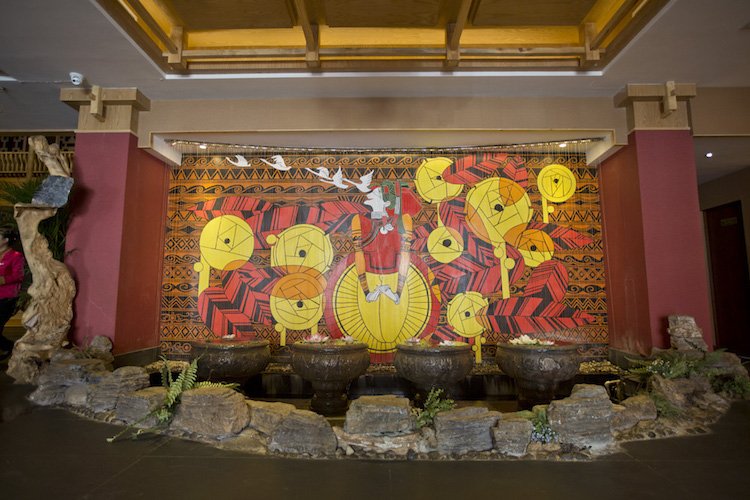
“Our owners wanted Beijing to learn more about the Yi people, and how they are a heroic, dynamic and proud minority,” says Lili Zhang, the restaurant’s Sales and Marketing Manager. “Diners will experience the Yi people’s exotic, colorful culture – just like being on the peak of Liangshan."
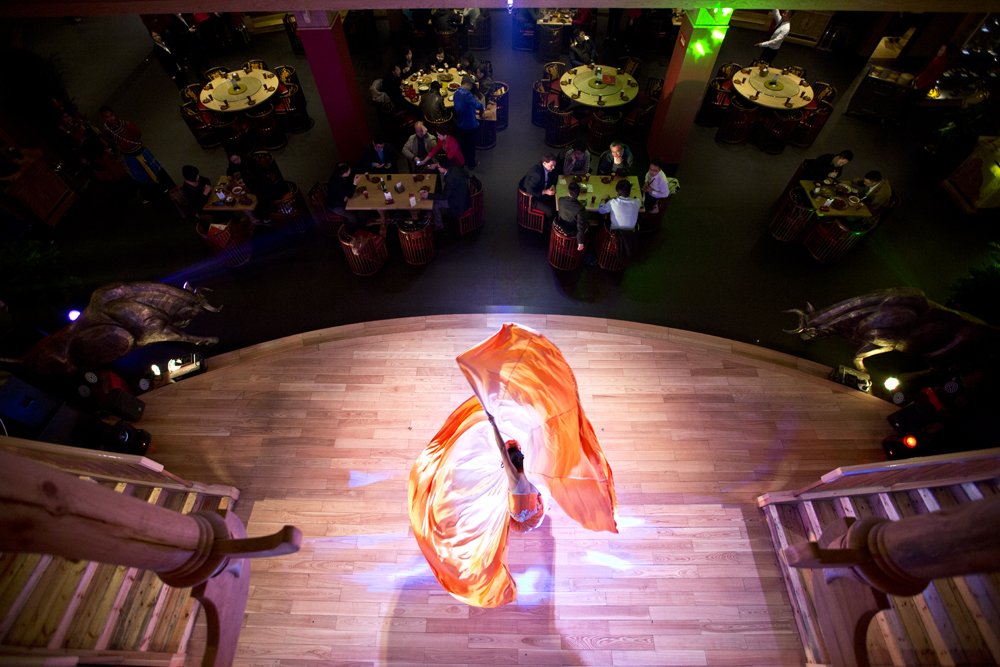
The centerpiece of the venue is a ground-floor stage featuring nightly traditional dance performances and singers performing melodic Yi folk tunes. Flanking the stage are two platforms filled with fascinating displays of Yi furniture and handicrafts, including vibrantly painted wooden bowls and ladles, meticulously stitched dresses, and two fiery full wall murals depicting ancient legends passed down through the generations of this richly cultured minority. Next to the main hall lies a smaller dining area where customers can order simple lunch sets and sip on sweet Liangshan wine served in intricately handcrafted jars. Plans are in the works to refurbish this section into a lounge serving cocktails and craft beer.
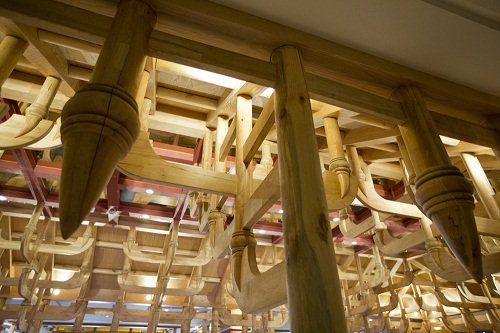
Winding wooden staircases lead up to the second floor. Here the walls are decorated with more vibrantly colored murals depicting scenes from Yi mythology, and overhung by craggy, jagged wooden rafters that recall Liangshan’s mountainous terrain and the horns of the cattle that thrive in those peaks.
The top floor contains a series of sprawling, softly lit private dining rooms adorned with colorful Yi handicrafts, which can also be purchased downstairs along with other selections of handmade Yi jewelry and dresses.

Elaborate décor aside, the soul of a restaurant’s lies in its food – we’ll take a closer look at Asiniuniu’s signature dishes in the next installment.
Photos: Uni You

